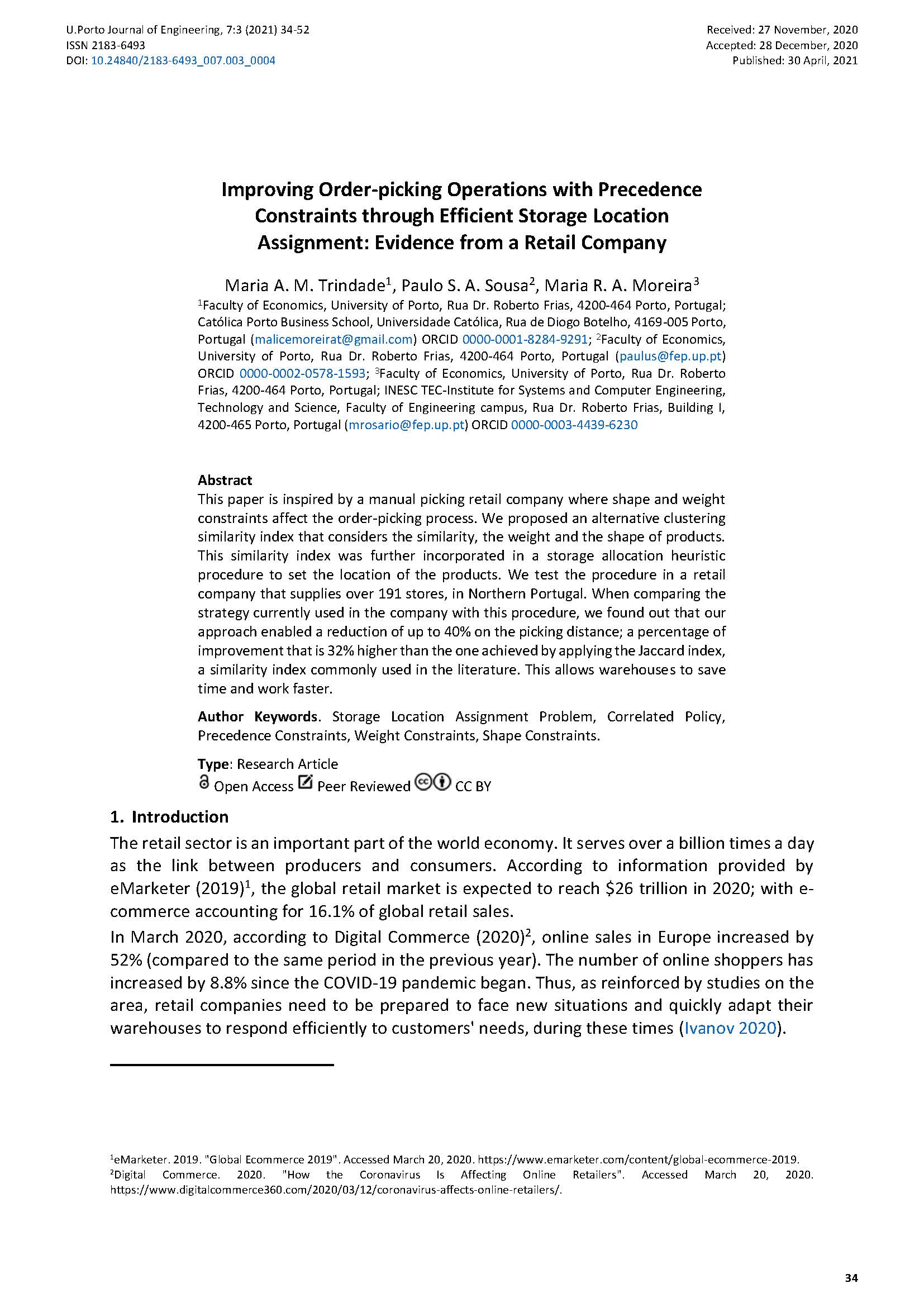Improving Order-picking Operations with Precedence Constraints through Efficient Storage Location Assignment Evidence from a Retail Company
Main Article Content
Abstract
This paper is inspired by a manual picking retail company where shape and weight constraints affect the order-picking process. We proposed an alternative clustering similarity index that considers the similarity, the weight and the shape of products. This similarity index was further incorporated in a storage allocation heuristic procedure to set the location of the products. We test the procedure in a retail company that supplies over 191 stores, in Northern Portugal. When comparing the strategy currently used in the company with this procedure, we found out that our approach enabled a reduction of up to 40% on the picking distance; a percentage of improvement that is 32% higher than the one achieved by applying the Jaccard index, a similarity index commonly used in the literature. This allows warehouses to save time and work faster.
Downloads
Article Details

This work is licensed under a Creative Commons Attribution 4.0 International License.
Authors who publish with this journal agree to the following terms:
- Authors retain copyright and grant the journal right of first publication with the work simultaneously licensed under a Creative Commons Attribution License that allows others to share the work with an acknowledgement of the work's authorship and initial publication in this journal.
- Authors grant the journal the rights to provide the article in all forms and media so the article can be used on the latest technology even after publication and ensure its long-term preservation.
- Authors are able to enter into separate, additional contractual arrangements for the non-exclusive distribution of the journal's published version of the work (e.g., post it to an institutional repository or publish it in a book), with an acknowledgement of its initial publication in this journal.
- Authors are permitted and encouraged to post their work online (e.g., in institutional repositories or on their website) prior to and during the submission process, as it can lead to productive exchanges, as well as earlier and greater citation of published work (See The Effect of Open Access).

